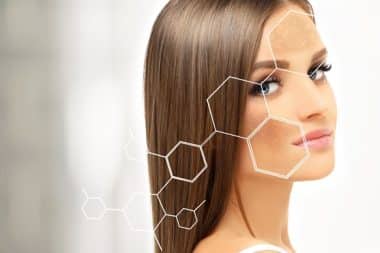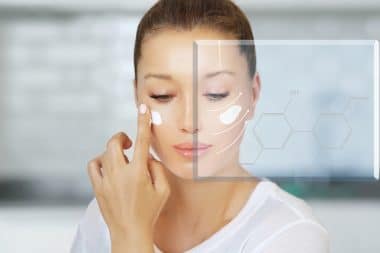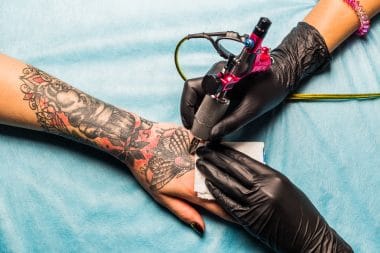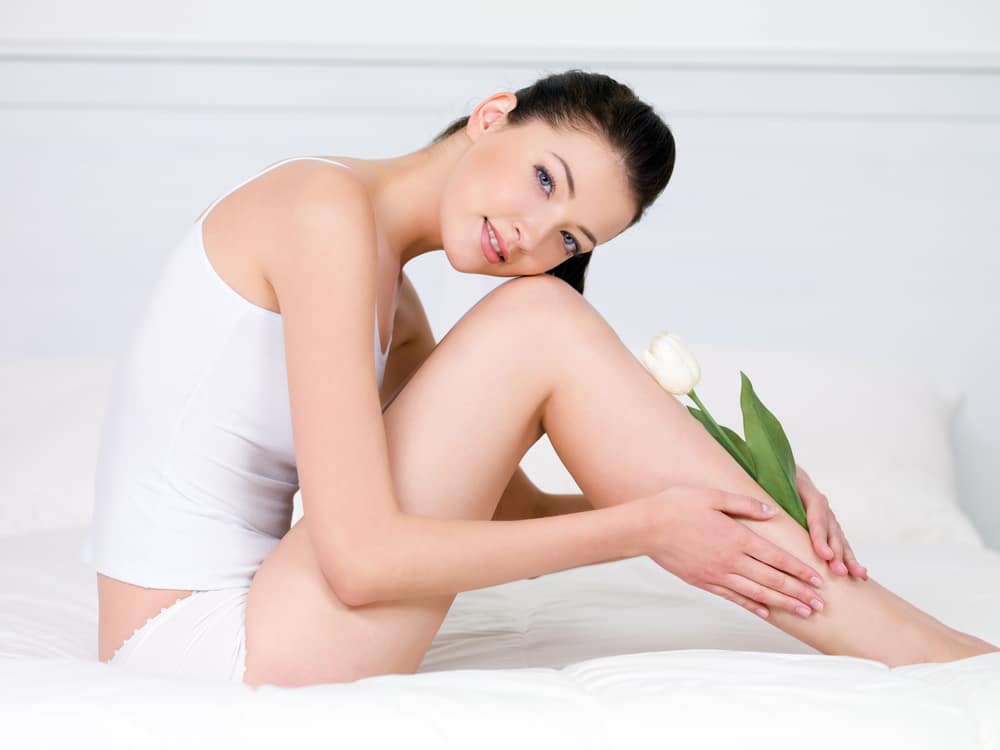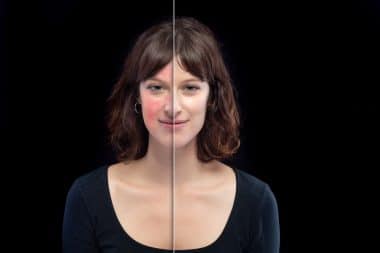When your hair follicles become full of oil and dead skin cells acne will appear. Most acne appears on the face and neck plus the chest, back and shoulders. It is not life-threatening but can be very distressing and persistent. Acne lesions heal very slowly and it often feels “when one lesion goes away other jumps up.”
Acne can cause severe scarring of your skin. There are treatments; however that can help with scarring and acne re-occurrence. The earlier you start treatment for acne, the less the damage in emotional distress and skin damage will be.
If you have acne:
- Watch for marks on your face, chest, back and shoulders. These are the skin areas with greatest number of oil glands. Non inflammatory lesions are called comedones or blackheads and whiteheads. Blemishes occur when the hair follicles are backed up and blocked with bacteria, dead skin, and oils. Comedones open at the skin surface are blackheads. If skin is closed over and slightly raised look for whiteheads.
- Inflammatory lesions include papules that are small raised bumps signaling inflammation or infection in the air follicles. Papules are often red and very tender to the touch.
- Pustules or pimples are red and tender bumps with white pus at the tips.
- Nodules are large and painful lumps just beneath surface of the skin. They are secretions deep within hair follicles and more difficult to treat.
- Cysts are very painful and pus filled lumps just beneath the surface of your skin. These are almost oil-like in their appearance and often cause scaring and infection.
What causes acne:
Factors that contribute to acne include overproduction of oil or sebum, irregular shedding dead skill cells and a buildup of bacteria on your skin. Tiny glands in your hair follicles secrete an oily substance or sebum to lubricate hair and skin. Sebum travels along the air shafts and out to the opening of your skin. If your body produces too much sebum and dead skin cells there is a buildup in follicles. A soft plug is manufactured and a bacteria loving environment is developed.
Plugs in follicle walls bulge and whiteheads are born; or the follicle can be open to the surface, oils and dead cells darken and blackheads appear. You can experience pimples that are raised red spots and have white centers full of infection. If your acne problems are severe enough, blockages and inflammation deep inside hair follicles produce cysts or lumps beneath the surface of the skin. Note that sweat glands in your skin do not produce acne.
Additional causes of acne include hormones, certain medications, and diet.
- Hormones that increase during puberty and cause the sebaceous glands to enlarge are called androgens. These hormonal changes are also caused by pregnancy and oral contraceptive use.
- Corticosteroids, androgens and lithium medications or medications containing these substances can cause acne breakouts.
- Direct contact with certain cosmetics that contain oily substances will cause acne.
- If your parents had acne problems unfortunately you are likely to develop the same problem.
- Avoid friction or pressure on you skin. Friction producing items can be cellphones, backpacks, tight collars or helmets.
- Diet is a factor in the product of acne. If you are prone to acne breakouts avoid dairy product as well as breads, bagels, chips or foods that increase blood sugar.
You will not have increased acne if you eat greasy foods and chocolate. Dirty skin will not cause acne and in fact if you scrub your skin with harsh soaps or chemical irritants, acne will be much worse. This doesn”t give you a license to eat greasy foods however and dirty skin is a hygiene problem. Eat leafy greens and fruits and do wash you skin daily with soap and water. Stress in and of itself does not cause acne, but if you are stressed due to acne conditions you might see more breakouts.
Treat your acne:
Acne treatments are developed to reduce oil production and speed up skin health and cell turnover. Products that fight bacteria and reduce inflammation are the best for skin irritations. With over the counter or even prescription acne treatments you may not see any type of results for up to four weeks. Do not be depressed if skin actually gets worse before it gets better using these types of treatments.
- Over the counter treatments include acne lotions that dry up oil and kill bacteria. These generally contain benzoyl peroxide, sulfur, salicylic acid or resorcinol as active ingredients. These are very helpful on mild acne flare-ups. You can, however cause your skin to become dry and flaky.
- Topical treatments that are prescriptions contain products derived from vitamin A. They promote cell turnover and help stop air follicles from becoming plugged. These preparations also kill skin bacteria and are often in carriers or preparations that moisturize skin.
- Antibiotics can be used in the short term to aid with severe acne. Antibiotics help reduce bacteria and fight inflammation. In this modern antibiotic age however acne is becoming more and more resistant to prescription and antibiotic treatments and dermatologists recommend you use antibiotic preparations sparingly.
- For patients with deep cysts a prescription preparation called Isotretinoin may be prescribed. Isotretinoin is a highly responsive medication but requires very close monitoring. There are side effects of isotretinoin and women who are pregnant should never take this medication. If you have dry eyes and mouth, lips, nose and skin inform your dermatologist. You may also experience muscle aches, sun sensitivity and poor night vision. If your doctor finds increased levels of triglycerides and cholesterol in the blood you may be at risk for other problems due to Isotretinoin use.
- Oral contraceptives can improve acne in women. Do be aware of the side effects of headaches, breast tenderness and depression.
- Laser and light therapy are options for acne prevention and cure. These therapies reach deep layers of skin and do not harm the surface. Laser treatments damage oil glands and encourage them to produce less oil. Light therapy targets bacteria and kill the little germs that cause inflammation. With laser and light therapy skin textures and appearance of scars can be improved. Do note that these types of therapies can be uncomfortable and temporarily cause sunburns.
- Try chemical peels and microdermabrasion if you have acne problems. These are cosmetic procedures and do lessen the appearance of fine lines, minor facial scars and sun damage. When used in conjunction with topical treatments they are very affective acne treatments. Side effects of chemical peels and microdermabrasion include redness, scaling, and blistering. You may also experience long-term discoloration of your skin if you have dark skin pigments.
If you are unfortunate enough to have scarring from acne these are procedures that can lighten these scars. Soft tissue fillers that include collagen injected under your skin is effective but does need to be repeated on a regular basis. Chemical peels that use acid applied to skin to remove the top layers and minimize scaring are good and dermabrasion or removing the top layer of skin with a wire brush and medication is also affective.
As a final treatment punch excisions or skin surgery can be performed. Punching actually cuts out individual acne scars. A skin graft or stiches repairs the hole left by the punch excision. This procedure is painful and healing takes time.
